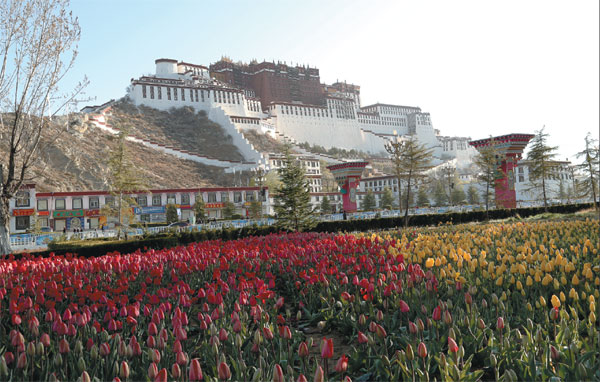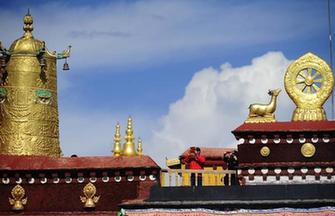Place of pilgrimage
|
The southwest corner of the Potala Palace in Lhasa. Photos by Da Qiong / China Daily |
The ancient Potala Palace has sustained its divine significance in modern times. Li Yang in Lhasa explores its spiritual prowess
The desolate vastness of the Tibetan Plateau seems another world to an urbanite like me. It's a place where life is hard - yet simple. My first trip to the Tibet autonomous region felt like a pilgrimage.
The Potala Palace is a must-see icon in the autonomous region's capital Lhasa because of its religious, cultural and historical significance.
It was the largest winter palace of Tibetan leaders in olden times and today serves as a symbol of the region. Its name means "holy place" in Vajravana Buddhism.
Potala's three nine-story buildings were constructed on the mountain in the seventh century to welcome the Tibetan king's fiancee, who hailed from the Tang Dynasty's (618-907) royal family.
But fires and wars destroyed the original buildings over the next millennium. The fifth Dalai Lama rebuilt the palace to its current 360,000-square-meter layout in the 17th century, and the central government renovated it in the 1930s and '90s.
It has survived the numerous wars and dozens of earthquakes over the past 700 years. The palace stands in its current form as a chronicle of the plateau's ups and downs over the centuries.
Potala is actually two main palaces - the larger White Palace at the base and the Red Palace above - plus a cluster of other structures higher up.
Both palaces comprise dozens of buildings constructed during different periods. The main building is 13 stories - 117 meters - high and offers panoramic vistas of Lhasa.

















